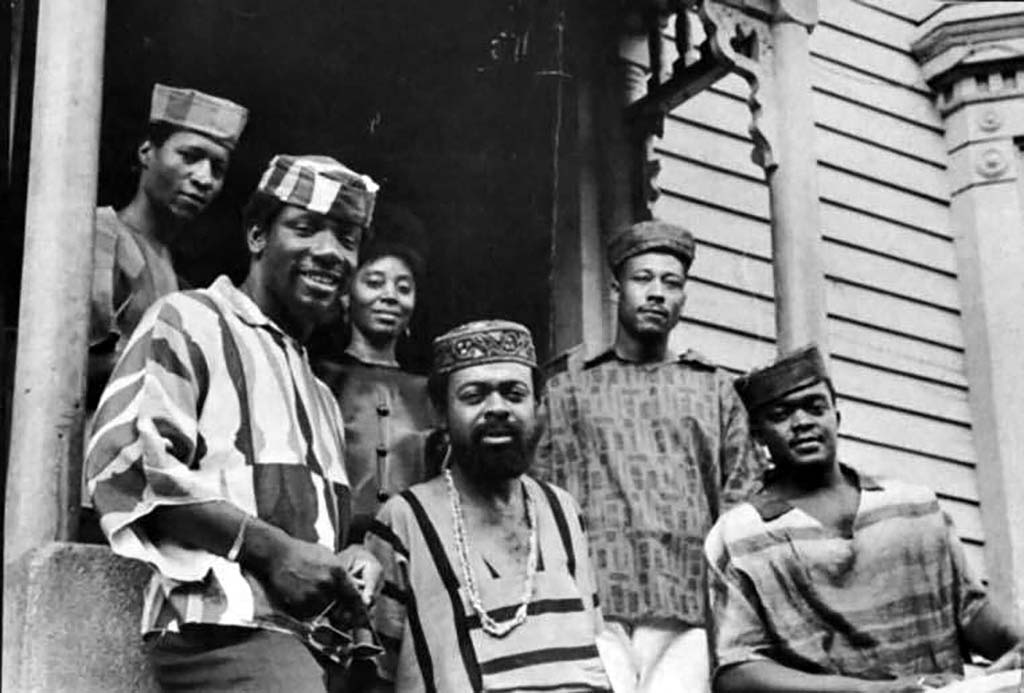Admist from April 12, 2021 to May 15, 2021 at The Stamp Gallery | University of Maryland, College Park | Written by Emily Pan
In the exhibit of Admist, I found myself exploring a different perspective of art than before. The exhibit is unique in a variety of ways but the most noticeable characteristic is the high number of 3D art pieces. As a theatre major studying lighting, this factor caught my attention. Before, lighting design always collaborated with the motion of performance, but through this exhibit, I discovered its significance in 3D art pieces.
Among all the pieces in the exhibit, Transition / Resurrection by Martin Gonzales is an excellent example of light collaboration with art. The piece is a combination of foam, cardboard, resin, paint, wires, and flags in a mountainous structure surrounding an inner space with a wired chair. Gonzales explains that the piece is him trying to build shelter in a world of “faultiness and heartquakes”. While the piece itself could be presented entirely covered in light, the piece can also be brought to life by using light purposefully. In lighting design, there are about five aims of light including selective visibility, revelation of form, information, composition, and mood. For Gonzales’ piece, selective visibility and revelation of form would definitely be most significant in supporting it.
Selective visibility refers to using light to determine the focus of the audience and creating a path of light. While every part is important to the whole, the light in the gallery highlights small moments and emphasizes where the attention of the audience remains for a brief moment longer. These moments include the small plank at the very peak of the structure that balances a small figurine. The extra time the audience gives to the part introduces the figurine as an object different from the rest and possibly significant to the artist. In addition to emphasizing moments for the audience’s attention, occasionally, light is used to create a path of vision. As a viewer walks around the structure, the light reflects off the tip of the white branch, and then slowly travels all the way downwards as the viewer continues walking around. It’s as if the light reflecting off the branch is both guiding and encouraging the viewer to keep seeking and to keep exploring throughout the structure.
Revelation of form refers to using light to reveal form. For a piece created from cardboard and various materials, texture is certainly important. When first stepping towards the piece, the viewer would immediately notice a sharp jagged spike coming far out of the structure. The light that highlights this part is coming from a strong side in which half of the piece lies in shadow and half in light. Being half in shadow emphasizes its form and shape, the shadow almost outlines what exists in view. The angle of the light also highlights the unique texture of the spike itself, the rope covered in paint creates slight shadows to reveal its ridges. As a result, this part of the structure is lit in such a way that it introduces the viewer to two important motifs in the piece; shape and texture.
The use of lighting goes beyond these examples and I encourage any viewer to continue to explore art through various different perspectives, whether from your own background or from this one. The significance of light also exists beyond just this piece, every piece in the exhibit is lit in a different way that highlights a different aspect. Light collaborates and supports the purpose and hopes of the art, and it helps us to better understand the art.
Martin Gonzales’ work is included in Amidst at The Stamp Gallery of the University of Maryland, College Park
For more information on Amidst and related events, visit https://stamp.umd.edu/stamp_gallery

